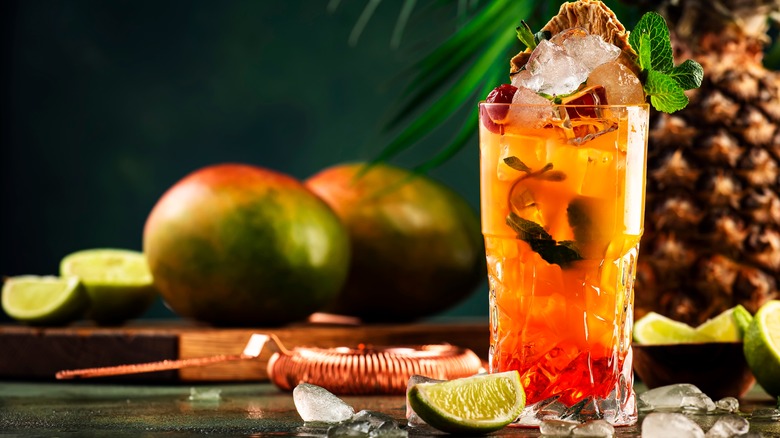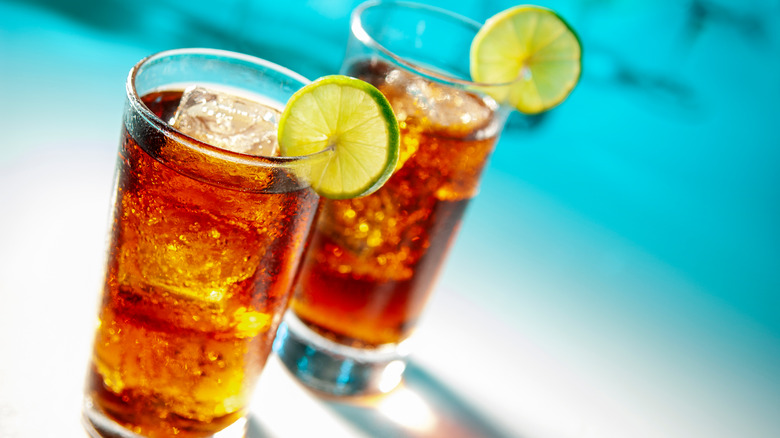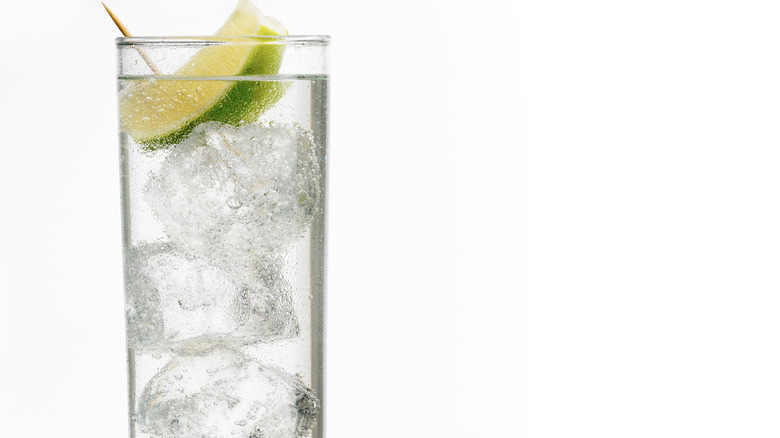When To Think Twice Before Ordering A Highball Cocktail
Highballs occupy a very specific niche in the cocktail world — not all bartenders and mixologists even consider them cocktails. That's because, historically, highballs have consisted of two ingredients (liquor and a carbonated mixer) and have required little effort to make. As a consequence, they're often classified as mixed drinks and not cocktails, the latter usually having three or more ingredients and more complicated preparation.
The first highball ever made, for example, reputedly consisted of scotch and soda, setting the mold for two-ingredient highball classics like a rum and Coke, or gin and tonic. This simplicity has no doubt contributed to the popularity of this type of drink, since not only are they easy to make at home, they also hold no secrets. If you're ordering one at a bar or restaurant, you generally know exactly what you're getting.
That's not always the case, however. Some highballs are a little more effective than others at masking their base liquor. This added smoothness is a boon for cocktail lovers who don't really like the taste of alcohol. But it also should indicate added caution. In highballs made with vodka, especially, the taste of alcohol can be so thoroughly covered up by the more flavorful ingredients that its effects quickly sneak up on you. When ordering vodka-based highballs, be careful not to overindulge, and you may want to avoid them entirely in some situations.
The anatomy of a highball cocktail
The highball glass is another trademark of the drink that can also be deceiving. Its tall, thin shape may suggest abundance, but that's not really the case. A typical highball glass has a capacity of about 8-12 ounces, yet most highball cocktail recipes call for less quantity, due to the presence of ice. It's important to note, of course, that highballs contain around the same amount of alcohol as most other cocktail styles. Typically, for example, a highball recipe will call for the same 1.5-2 ounces of the base liquor.
The most notable ingredient in a highball, by quantity, is usually a carbonated beverage of some sort (either soda, tonic water, ginger ale, or sparkling water). The tonic in a gin and tonic, for example, can account for up to 4 ounces of the finished drink. This carbonated element has contributed to the conception of highballs as light, fizzy drinks. And, historically, that's what they were. No juice was included in traditional highballs.
In recent decades, however, juice has become an increasingly popular mixer for highballs. In fact, juice-focused drinks like the screwdriver or sea breeze are now a recognized subcategory. These juice drinks are quite delicious, but they also effectively mask the flavor of spirit inside the glass. Caution is therefore important in highballs as the more subdued alcohol in these drinks can sneak up on you.
Why you should be careful with vodka-based highballs
Highballs have a reputation as great drinks when the weather is warm, due to the fact that they're light and often fizzy. The light aspect is certainly true. Because highball recipes call for a higher quotient of the mixer — up to 4 ounces — which is more than most cocktail styles, they do often seem slightly watered down. But of course they're not, as they contain the same quantity of alcohol as other cocktails. And that's what may make you inebriated quicker, as you may be able to drink more of them since you can't taste the alcohol nearly as much.
In most cocktails, the base alcohol is quite noticeable. That's not always the case with highballs, especially those made with vodka, which is a neutral spirit with little discernible flavor. Thus, vodka can be more effectively masked in cocktails more than other liquors. Because some of these cocktails are so smooth, a little added attention is required to ensure you don't feel their effects too quickly.



